Table of Contents
Definition
The network of glands that create the hormones facilitating cell communication is known as the endocrine system. They are responsible for nearly every organ, cell, and body function.
The endocrine system controls almost all bodily metabolic processes to provide a coordinated response through these activities. Several glands that comprise the endocrine system secrete hormones into the circulatory system so that they might reach a target cell. Although the target cells may be far from the endocrine glands, endocrine system hormones still function.
The endocrine system releases hormones to trigger the stress response, control the blood pressure or heartbeat, and generally regulate how our cells develop and grow.
Parts and Organs
Organs called glands constitute the endocrine system. Different hormones which are targeted toward different parts of the body are produced and released by glands. Some glands are relatively small, like a pea or a grain of rice. The pancreas, around 4-6 inches in length, is one of the largest glands of the human body.
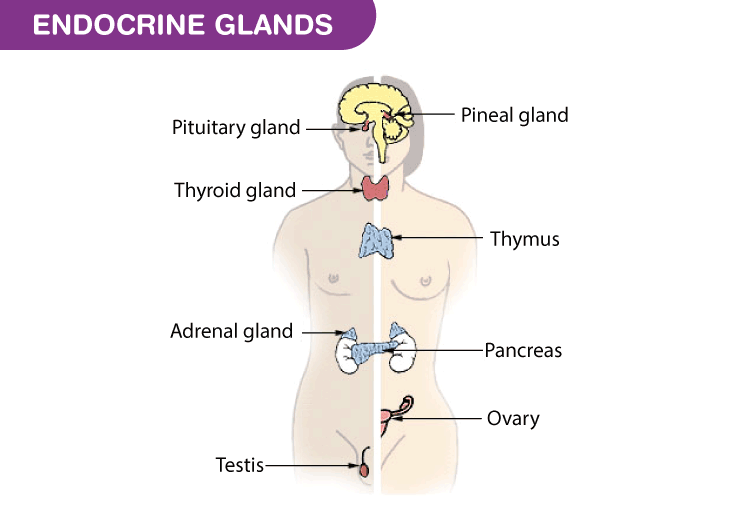
The following glands constitute the endocrine system:
Hypothalamus
The hypothalamus is located near the base of the brain, above the pituitary, and below the thalamus. The hypothalamus is responsible for preserving homeostasis, or the internal equilibrium of the human body. The endocrine system primarily depends on the hypothalamus.
Since it gets information from almost every region of the nervous system, the hypothalamus is engaged in various autonomic nervous system processes. As a result, it is regarded as the connection between the endocrine and nervous systems.
The hypothalamus produces hormones that release and suppress other hormones across the body, enabling them to start and stop production. These include the following hormones:
- Antidiuretic hormone (ADH)
- Corticotropin-releasing hormone (CRH)
- Gonadotropin-releasing hormone (GnRH)
- Growth hormone-inhibiting hormone (GHIH) or growth hormone-releasing hormone (GHRH)
- Oxytocin
- Prolactin-inhibiting hormone (PIH) or prolactin-releasing hormone (PRH)
Read More:Hypothalamus
Pituitary Gland
The pituitary gland is found at the base of the brain, beneath the hypothalamus. Because it is involved in several body functions, it is usually referred to as the “master gland”.
Hormones that are released by the pituitary gland circulate throughout the body. These hormones either control specific bodily functions or trigger the production of more hormones by other glands.
The hormones produced by the pituitary gland include the following:
- Adrenocorticotropic hormone (ACTH)
- Follicle-stimulating hormone (FSH)
- Thyroid-stimulating hormone (TSH)
- Growth hormone (GH)
- Luteinizing hormone (LH)
- Prolactin
Antidiuretic hormone (ADH) and oxytocin are produced by the hypothalamus but released from the posterior pituitary.
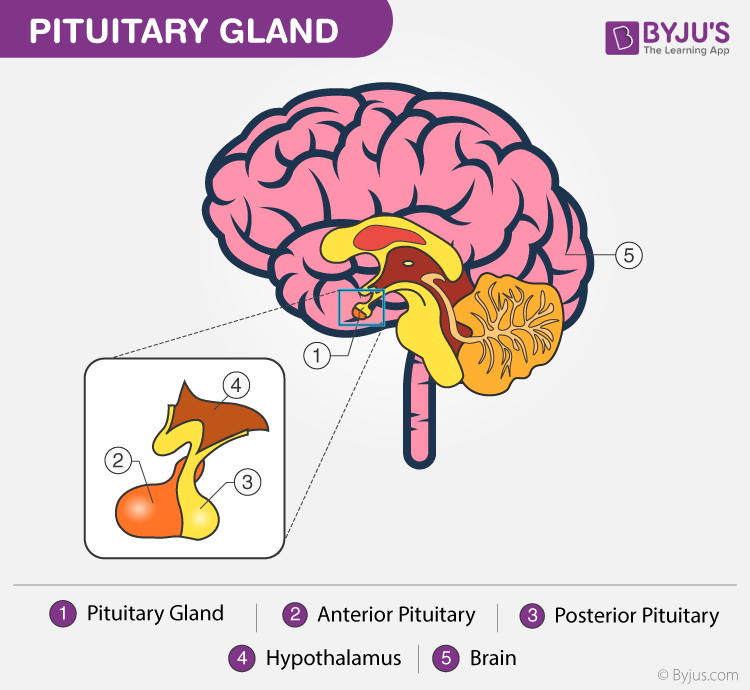
Read More:Pituitary Gland
Thyroid Gland
The thyroid gland plays a significant role in controlling our metabolism and ensuring overall health. The thyroid gland is situated in the front portion of the neck, below the larynx.
The primary function of the thyroid is to control metabolism, or our body’s capacity to digest food and convert it into energy.
The hypothalamus releases Thyrotropin-releasing hormone (TRH) when thyroid hormone levels are too low, alerting the pituitary to create thyroid stimulating hormone (TSH).
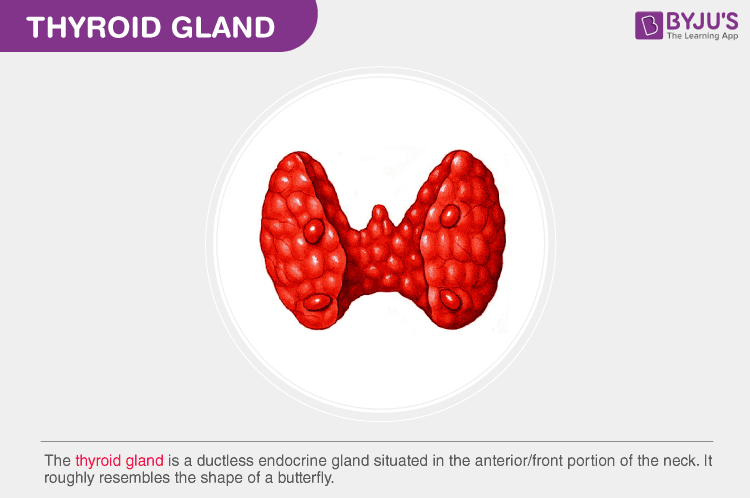
Read More:Thyroid Gland
Parathyroid Gland
The primary function of the four tiny parathyroid glands is to secrete parathyroid hormone, which controls the body’s calcium levels. The four parathyroid glands are located on the thyroid’s backside.
The neurological and muscular systems are mainly supported by the parathyroid. Our bone cells release calcium into the circulatory system due to the strong influence of the parathyroid hormone (PTH).
Calcium is the main component that makes muscles twitch, and calcium levels are essential for the regular flow of electrical impulses along neurons.
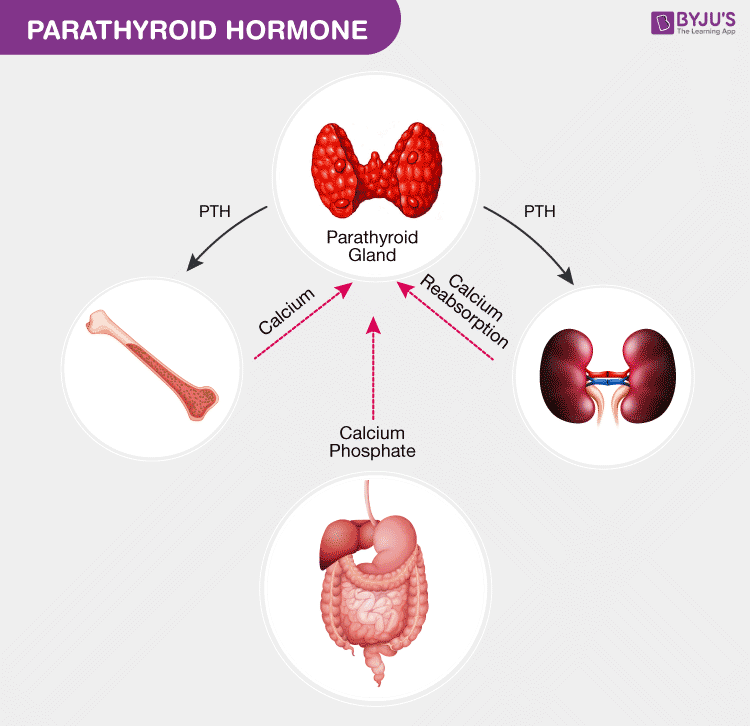
Read Also:Parathyroid Hormone
Adrenal Glands
Two triangular-shaped glands called the adrenal glands are found on top of each kidney. The outer adrenal cortex and the inner adrenal medulla are the two components that comprise each adrenal gland.
The functions of the adrenal cortex and adrenal medulla are highly dissimilar. In response to stress, these glands release hormones that control the salt and water balance of the body, blood pressure, and glucose metabolism.
The adrenal glands produce the following hormones:
- Glucocorticoids, including cortisol
- Mineralocorticoids
- Adrenal androgens
- Catecholamines, such as:
- Epinephrine or adrenaline
- Norepinephrine
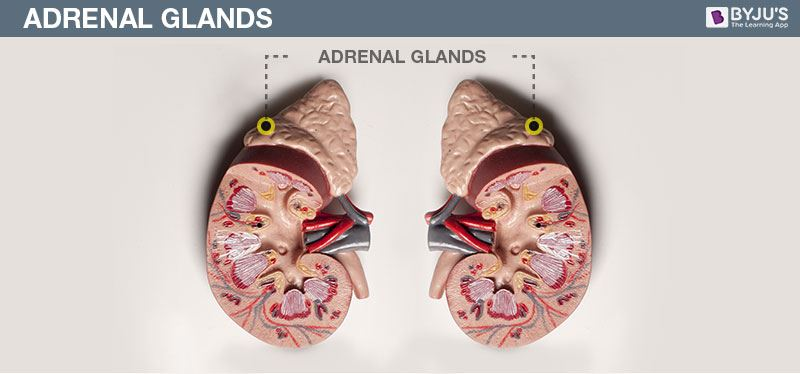
Read Also:Adrenal Gland
Pineal Gland
The pineal gland, located deep inside the brain. Melatonin is produced by the pineal gland and helps regulate reproductive hormones and circadian rhythm.
Melatonin is the only hormone secreted by the pineal gland (not the pigment melanin). This basic hormone is unique in that light controls its secretion. Melatonin helps to regulate specific reproductive hormones and the circadian or biological clock, its two main functions in humans.
Read Also:Pineal Gland
Pancreas
The pancreas is an abdominal gland organ. The primary purpose of the pancreas is to regulate blood sugar levels in a normal range. The primary pancreatic hormones that control blood glucose are insulin and glucagon.
The balance of sugar and salt in our bodies is maintained by synthesising pancreatic hormones such as insulin, somatostatin, and glucagon.
Read Also:Pancreas
Ovaries
The female reproductive system is maintained by a pair of ova-producing structures called the ovaries. They are situated on either side of the uterus, near the opposite sides of the pelvic wall.
Progesterone and oestrogen are two categories of sex hormones produced and released by the ovaries. Together, these hormones help females develop their sexual characteristics during puberty and maintain fertility.
Testes
A pair of sperm-producing structures maintain the male reproductive system called the testes (also known as testicles). The ovaries are their female counterparts. They are situated inside the scrotum, the skinny pouch that extends from the body behind the penis.
The testosterone produced by the testicles is essential for males’ healthy physical growth.
Read Also:Gonads
Structure
The endocrine system is broadly spread throughout the body, unlike other systems. Additionally, the components of the endocrine system can perform independently of one another to control and coordinate the body. For instance, the pineal gland in the brain releases the hormone melatonin in response to light entering the eyes. The activities of the reproductive endocrine glands, reacting to a specific set of signals, can be entirely distinct from this function of the pineal gland.
However, some glands, such as the hypothalamus and thyroid, also regulate the activity of other glands. These glands help coordinate the entire functions of the body and the system as a whole.
These glands can release several hormones at once, each of which can have a number of different effects. As a result, the endocrine system has one of the most intricately designed structures in the body.
Functions
The nervous and endocrine systems combine signals from various body systems and the environment. The endocrine system also produces effector molecules, like hormones, that can cause the body to function appropriately to maintain homeostasis.
The nervous system has immediate consequences. The endocrine system is made to start relatively slowly but has a long-lasting effect.
Several factors can influence how our body produces and releases hormones. Sometimes glands create an excess or a deficiency of a hormone. A hormone imbalance can be brought on by sickness, stress, and certain drugs. High blood pressure, weight gain, and changes in sleep, mood, and behaviour are a few health issues resulting from this imbalance.
Related Links:
- Endocrine Glands
- Endocrine Glands and Hormones
- Endocrine System: Ductless Glands
- Endocrine Disorders and Glands
Visit BYJU’S Biology for more information.